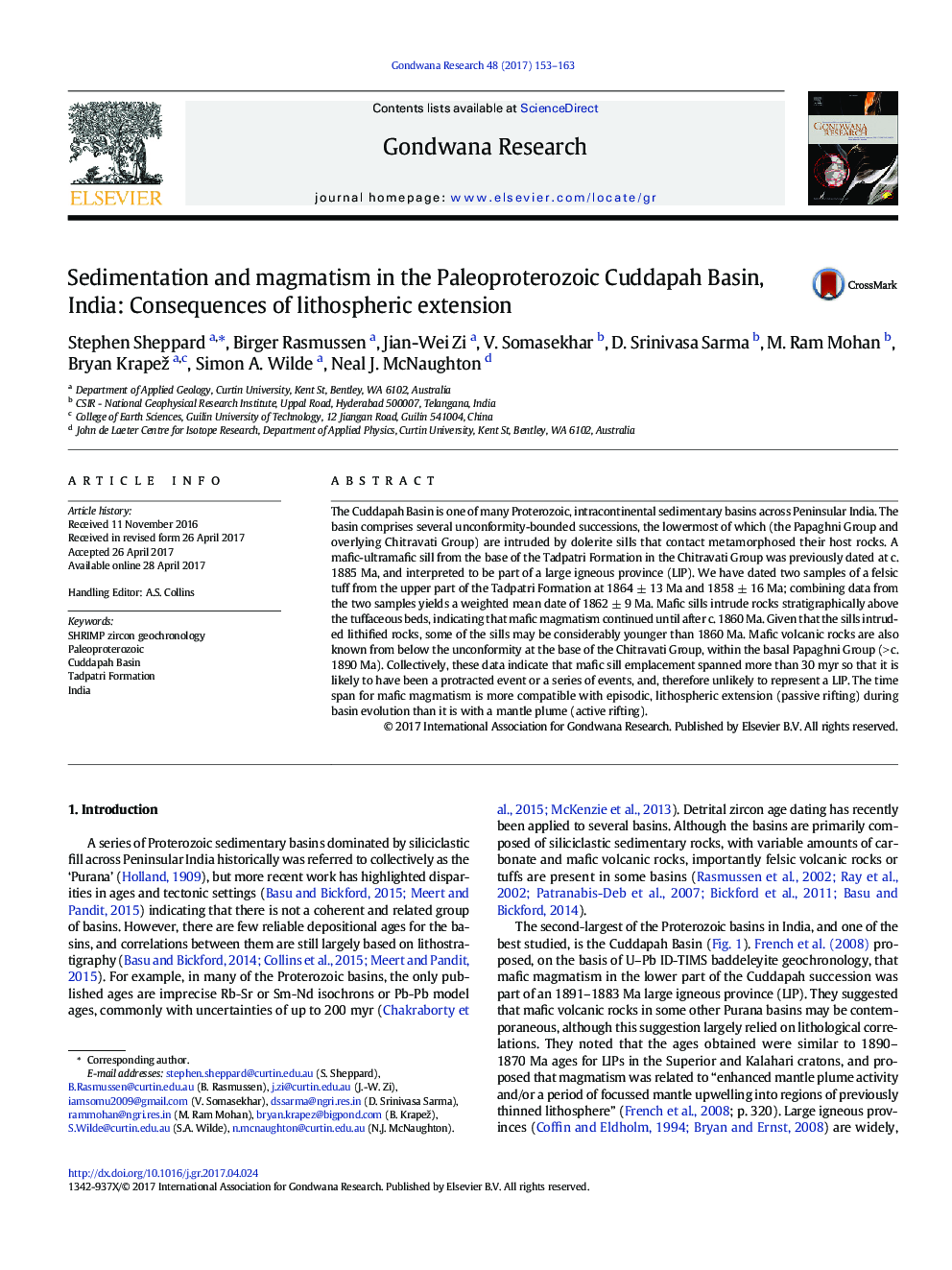| Article ID | Journal | Published Year | Pages | File Type |
|---|---|---|---|---|
| 5785375 | Gondwana Research | 2017 | 11 Pages |
â¢The Cuddapah Basin is one of the largest intracontinental basins in India.â¢New SHRIMP U-Pb zircon date of c. 1860 Ma for a tuff in the lower part of the basinâ¢Magmatism in the basin spans > 30 Myr and is consistent with episodic passive rifting.
The Cuddapah Basin is one of many Proterozoic, intracontinental sedimentary basins across Peninsular India. The basin comprises several unconformity-bounded successions, the lowermost of which (the Papaghni Group and overlying Chitravati Group) are intruded by dolerite sills that contact metamorphosed their host rocks. A mafic-ultramafic sill from the base of the Tadpatri Formation in the Chitravati Group was previously dated at c. 1885 Ma, and interpreted to be part of a large igneous province (LIP). We have dated two samples of a felsic tuff from the upper part of the Tadpatri Formation at 1864 ± 13 Ma and 1858 ± 16 Ma; combining data from the two samples yields a weighted mean date of 1862 ± 9 Ma. Mafic sills intrude rocks stratigraphically above the tuffaceous beds, indicating that mafic magmatism continued until after c. 1860 Ma. Given that the sills intruded lithified rocks, some of the sills may be considerably younger than 1860 Ma. Mafic volcanic rocks are also known from below the unconformity at the base of the Chitravati Group, within the basal Papaghni Group (> c. 1890 Ma). Collectively, these data indicate that mafic sill emplacement spanned more than 30 myr so that it is likely to have been a protracted event or a series of events, and, therefore unlikely to represent a LIP. The time span for mafic magmatism is more compatible with episodic, lithospheric extension (passive rifting) during basin evolution than it is with a mantle plume (active rifting).
Graphical abstractDownload high-res image (370KB)Download full-size image
